Poulenc's Organ Concerto – which recording is best?
Gramophone
Wednesday, April 29, 2015
Poulenc’s Organ Concerto is the only work of its kind to enter the concert repertoire. Geraint Lewis follows the trail from Rocamadour to Paris
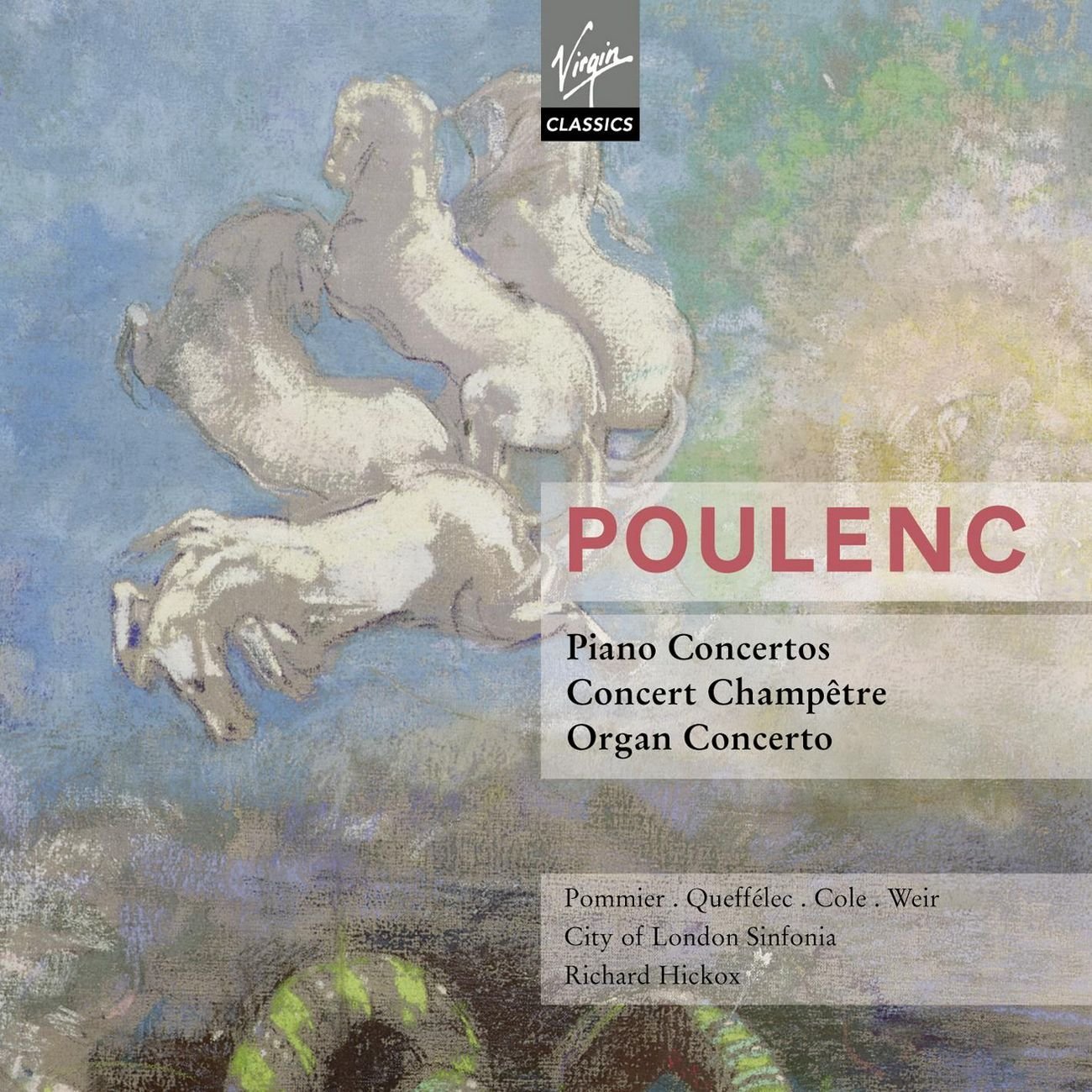
‘I shall always remember Francis Poulenc getting off the train in that famous month of August 1936.’ We are at Uzerche – a very small town to the west of the Auvergne region in idyllic mid-France – and pianist-coach Yvonne Gouverné is waiting at the station with baritone Pierre Bernac. In her sensible suit, flat shoes and three ropes of outsize pearls she could be an impeccable French governess awaiting her holiday charges, while he resembles a discreet country-town solicitor about to break bad news. They are both in fact looking forward eagerly to a warm and flamboyant greeting when their composer-colleague Francis Poulenc clambers off the train with ungainly gait, lavish embrace and a tantalising preview of the latest naughty gossip from Paris, of which there will be plenty more to sustain them throughout a fortnight of rehearsing for the forthcoming season of recitals which Poulenc had just started giving with Bernac.
But when the train stops and the carriage door opens, Poulenc emerges looking ashen-faced and immediately blurts out that ‘Ferroud has just been killed in a horrific car accident somewhere near Salzburg’. This shocking news was especially poignant for the little group on the platform, having spent the summers of 1934 and 1935 together in Salzburg, where they saw the composer and concert organiser Pierre-Octave Ferroud at some point every day. And now in 1936 he was killed on August 17 on his way back to Mozart’s birthplace after a short trip to Hungary. He was a dear colleague as opposed to an intimate friend but what Poulenc found especially haunting was the gruesome detail that Ferroud had been instantly decapitated in the accident. Many traditional Poulenc biographies consider this ‘famous’ third week of August 1936 to be the critical turning-point in both his life and work: the moment when the ‘bad-boy’ street urchin becomes the devout monk ‘en route to the cloister’ and the start of a pilgrimage which would eventually lead to the Organ Concerto, carefully dated ‘April‑August 1938’. An attempt to unravel the truth however uncovers a far more complex background to this – the only work of its kind to have entered the permanent symphonic repertoire.
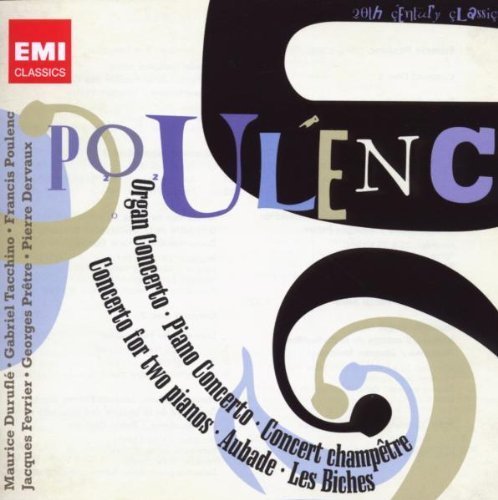
What is true nevertheless is that having arrived at Uzerche in a state of some shock, Poulenc then insisted – virtually the next day, August 22 – on commandeering Bernac and his car to drive them to the celebrated shrine of Our Lady at nearby Rocamadour, even though he had never been there before and was not to any obvious extent devotional in nature. He was to describe the setting vividly. ‘Perilously situated alongside a winding road’ – how the impeccable Bernac must have loved that – ‘clinging in full sunlight to a vertiginous craggy rock, Rocamadour is a place of unbelievable peace. With a courtyard in front, pink with oleanders in tubs and laurel trees, the very humble chapel, half hollowed out of the rocky mountainside, shelters a miraculous figure of the Virgin, carved, according to tradition, out of black wood by Saint Amadour, the little Zacchaeus of the gospel who had to climb up a tree to see the Christ.’
So if anything, it was a peaceful and serene epiphany, as almost inferred by Yvonne Gouverné. ‘We all three entered the silent chapel in which stood the statue of the Black Virgin. Outwardly, nothing happened, yet from that moment everything in the spiritual life of Poulenc changed. He bought a little picture with the text of the Litanies to the Black Virgin, and as soon as we were back in Uzerche he began to write that very pure work for female choir and organ, Les Litanies à la Vierge Noir.’ This was Poulenc’s first specifically religious work and his first to use the organ, and it was completed before the August was out. Its subsequent orchestration, perhaps significantly, was for strings and timpani – the very combination he used for the Organ Concerto. But in actual fact the Concerto was already on the piano desk well before the visit to Rocamadour and the horrifying death of Ferroud – even though its ostensible composition lay two years away.
Another Poulenc legend surrounds the fabulous wealth he inherited from his father’s famous chemical company. This was certainly considerable and cushioned his early life with luxurious trappings but, with the crash of the Lyon-Allemande Bank in 1931, he began to suffer and found that other sources of income were needed to maintain his comfortable lifestyle. This was in fact the motivation which led him in 1934 to start working as a regular recital pianist with Bernac – in that he consciously rejected the alternative of writing ‘inferior and venal’ film music and the like.
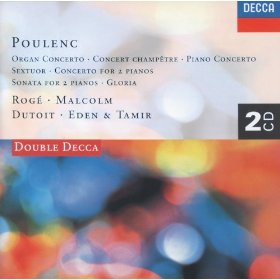
He also, very discreetly, began to explore the possibility of one or two lucrative commissions. In this respect, his huge earlier fortune ironically now proved to be something of a handicap in that while it had helped to secure his smooth glide into the upper echelons of the Parisian cultured elite when he was still in effect a precocious teenager, it also meant that he was accepted as a social equal from whom any overt dangling for financial gain would be considered dreadfully bad form! So he attacked obliquely, with his genuinely ineffable charm. In 1931 he wrote to one Marie-Blanche, the Comtesse Jean de Polignac, with whom he was on what he called ‘family’ terms, and then to her sister-in-law, the Comtesse Charles de Polignac. Their formidable aunt was Winnaretta (née Singer), American-born but now the widowed Princesse Edmond de Polignac, whose truly fabulous sewing machine-derived wealth would have made Poulenc seem quite the poor relation. After the desired intercession the beautifully tactful letter arrived. ‘I regret not having had the opportunity of seeing you before your departure, to ask if you would consider the possibility of writing a work for "my" collection which consists, as you know, of Renard, Master Peter’s Puppet Show, Socrate, etc. I would be so delighted to add your name to those of Stravinsky, Fauré, Falla and Satie, who have so kindly composed for my "collection" the beautiful pieces with which you are familiar.’
In his discussion with the nieces Poulenc had delicately but clearly stated his terms and so the sentence which turned the letter to gold in his eyes read: ‘May I propose that you accept for this work a sum of 20,000 francs, plus 5000 for the performance at my home in Paris.’ For this she duly got, in 1932, the delectable Two-Piano Concerto which Poulenc premiered with his chum Jacques Février at that year’s Venice Biennale with the Orchestra of La Scala, Milan. This in itself was seen as a remarkable indulgence on her part since she usually insisted on private Parisian premieres before the great unwashed could hear ‘her’ pieces. But she naturally also had her own Palazzo Polignac on Venice’s Grand Canal near the Accademia (previously the Palazzo Contarini, reputedly home of Othello’s Desdemona) and a hand in helping the fledgling musical wing of the Biennale, so this branching-out of her patronage was retrospectively seen as a triumph when linked to the enormous triumph enjoyed by the work itself.
Thus emboldened, Poulenc decided to strike directly in 1934 with a request for another commission which he carefully couched in terms designed to appeal to the Princesse’s own musical predilections. She answered with equal directness: ‘You have written me so frankly that this permits me to tell you quite simply that, thanks to Monsieur Roosevelt, my musical budget has been very considerably reduced. I can therefore offer you only half of what you were kind enough to accept for the Concerto. In these conditions, will it be (or is it) in your interest to write for an instrument which is not much in evidence? I hope you will do so all the same, perhaps with my Cavaillé-Coll in mind, which would require a certain amount of study on your part concerning the stops. Nadia would give you invaluable advice.’ Poulenc knew perfectly well that the Princesse was an organ obsessive and that she regularly treated her salon guests to her own interpretations on her customised instrument of Buxtehude and Bach in particular – and that since 1933 she’d been having lessons from a youngish Mademoiselle Nadia Boulanger of whom the Princesse was a devoted acolyte. So the iron was pretty hot and Boulanger was on the case immediately, even suggesting that the new work might be written for the Princesse herself to play ‘either with a quartet, or else with piano’.
The Organ Concerto was thus conceived. The very beginning – a huge rhetorical gesture in G minor – was (like the Cavaillé-Coll on which it was to be played) specially customised for the Princesse in deriving from her headed notepaper’s quotation of the opening of Bach’s great G minor Fantasia and Fugue, BWV542. One can easily imagine the smile which would wreathe the Princesse’s otherwise rather austere face (once unkindly likened to George Washington’s) as she opened the score!
It is clear that Poulenc somehow managed to inhabit the very spirit of the organ in crafting this work – his first for the instrument, a promised sonata for the Comtesse Etienne de Beaumont in 1923 having somehow evaporated. He also successfully avoided the pianist’s natural trap of simply writing piano music writ-large – all the more remarkable in that after the Two-Piano Concerto in 1932 he wrote hardly anything but bits of solo piano music until 1935 and that he himself was no organist. On April 30, 1936, he writes to his confidante Marie-Blanche Polignac that ‘the Concerto is almost completed. It has given me a great deal of trouble but I hope it is all right as it is now, and that you will like it. It is not the amusing Poulenc of the Concerto for two pianos but more like a Poulenc en route for the cloister, very XVth, if you like. Granted, the other 15th also has its charms, Vaugirard, etc.’The atmosphere of the new piece was therefore clearly delineated in his mind as between centuries and arrondissements but it continued to give its composer much trouble.
Six weeks later on June 17 he wrote to the young composer-conductor Igor Markevitch that he was ‘still hard at work. My Organ Concerto which is nearing its end has cost me a great many tears because I have constructed it out of new materials.’ On August 15 he wrote to Marie-Blanche again, from his sister’s Normandy chateau of Tremblay, after ‘10 days here all alone in a big house, not my own, in the pouring rain – and what rain! – thumping away on a piano that has more fungus than flats…my heart full of moss and melancholy’. He describes the Organ Concerto still in progress as ‘grave and austere’ and also refers to ‘seven beautiful, solemn Chorales’ (the Sept Chansons completed in April) which together with the Concerto ‘show a very new trend’. And then exactly a week later he was literally on his way to the cloister – standing in front of the Black Virgin at Rocamadour.
How much the ‘almost completed’ Concerto of pre-August 1936 actually matches the finished score of August 1938 will remain pure conjecture, since any sketches were destroyed as Poulenc carefully covered his tracks. By September 1936 he talks of working again on the ‘Concerto which I botched in spring’, of ‘hoping for inspiration from above’ and in November uses Nadia Boulanger to inform ‘the dear Princesse that the Concerto is not a myth…but that I will not deliver it to her until it is perfect, with that imperfect perfection that is mine’. And then the trail goes cold. But by May 1938 the ‘dear Princesse’ begins to show her carefully manicured claws: ‘I would like to believe that the beautiful work you are writing for me is at last completed…I am so looking forward to finally hearing what you have been working on for so long, which I know in advance will be marvellous.’ A bit more careful grovelling followed from Poulenc and then miraculously on December 16 (with the Black Virgin no doubt helping discreetly) the work was unveiled in the Polignac salon on the avenue Henri-Martin with composer-colleague Maurice Duruflé (no less) at the Cavaillé-Coll and Nadia Boulanger conducting a hand-picked string band plus timpanist.
The public premiere followed at the Salle Gaveau on June 21, 1939, with Roger Désormière conducting and Duruflé again at the organ. So the recording he made at Saint-Etienne du Mont in Paris in February 1961 with Poulenc in attendance is uniquely authentic. Moreover, Duruflé helped Poulenc with the registration and is given credit for this on the score alongside the fulsome dedication to the Princesse. The sheer élan and authority of this performance sweeps all before it and the sense of occasion is palpable. Space is of the essence here in that the music can breathe naturally and Georges Prêtre with the Paris Conservatoire Orchestra captures the ebb and flow of the sectionally constructed score as to the manner born. A hard act to follow!
Of some 23 other recordings, Marie-Claire Alain, Dame Gillian Weir and Simon Preston clock in with three each. Sympathetic though one would expect Mlle Alain to be, her three tapings are disappointingly prosaic and matter-of-fact, are virtually carbon copies of each other and at times she would seem to be in charge of a Singer sewing machine rather than a Cavaillé-Coll organ. Simon Preston got going in 1977 with Previn and the LSO at the Royal Festival Hall and this comes quite near the top of the list with its immaculate solo command and smooth support. It easily eclipses the later versions he made in Adelaide Town Hall and Boston Symphony Hall, where Ozawa seems oddly icy. Dame Gillian took to the Festival Hall console in 1988 with Richard Hickox as accomplice. This visceral account shows just what Preston/Previn lack. The organ is as if heard within rather than above the orchestral fray and the urgency of the fast passages balances perfectly the sensuous calm of the quiet pages. If you want Weir this is the one to get. Her two later remakes for Linn in Tonbridge School are beset with problems of balance and seem sadly stillborn alongside the often hair-raisingly thrilling original.
Of other ‘star’ performers the tally is surprisingly small and the results disappointing. High hopes for Peter Hurford (himself splendid) with the Montreal Symphony and Dutoit are dashed by the latter, who turns the fast music into Keystone Cops rattle-and-race and nothing more. Ian Tracey and the BBC Philharmonic are inevitably sabotaged by Liverpool’s gruesome Anglican Cathedral where even Chandos can do little to salvage a brave stab. And from this cavernous noise to Olivier Latry’s biscuit-dry Philadelphia version with Christoph Eschenbach, we cover the sonic gamut from A to Z but with no appreciable musical gain. The rest are mostly small-time discs of little interest and so what we desperately need now are superbly recorded versions from John Scott and Thomas Trotter, the two finest players of their generation, who – quite perversely – have never been asked to record this concerto.
Poulenc was well aware that his magical alchemy of the sacred and secular in this score would lend itself to both concert-hall console and cathedral or chapel organ loft, and the recorded legacy to date balances the two options pretty well. The most striking location surely has to be Notre-Dame in Paris where the only ‘live’ recording was made in 1997 by capturing the then resident-organist Philippe Lefebvre with Jean-Claude Casadesus at the helm. They seem to be of one mind and prove that Poulenc managed to spin his neo-Baroque thread with richly dramatic colours and unbroken structural command. Best of all perhaps is George Malcolm who in July 1977 was installed by Decca in the Chapel of St John’s College, Cambridge, with the Academy of St Martin in the Fields. From the first earth-shaking chord you are firmly inside the building and the picture naturally encompasses the strings who, under Iona Brown’s passionate leadership from the violin, give what is easily the finest account of the often treacherous accompaniment. Malcolm is alert to every nuance from Bachian majesty to fairground vulgarity and he paints it all with virtuoso aplomb – and only the notorious trompeta real at St John’s fully clinches the blood-curdling fanfare before the final stroke of the guillotine cuts off the music with brutality.
But if, in the end, I go back to Duruflé in 1961, with Poulenc at his elbow in Paris, it is only because a certain spirit of danger lurks behind the pillars of the Eglise Saint-Etienne-du-Mont throughout. It is as if this music is full of ghosts – benign or otherwise – and their presence brings the music uncannily to life and recalls the sad, last letter that the ‘dear Princesse’ wrote from her wartime London exile in November 1939 to ‘her faithful composer’ Poulenc, in which she thanks him ‘for so many wonderful hours of music, and for writing both the Venice concerto and the Paris one for me, whose profound beauty continues to haunt me’: 12,500 francs well spent, if you ask me.
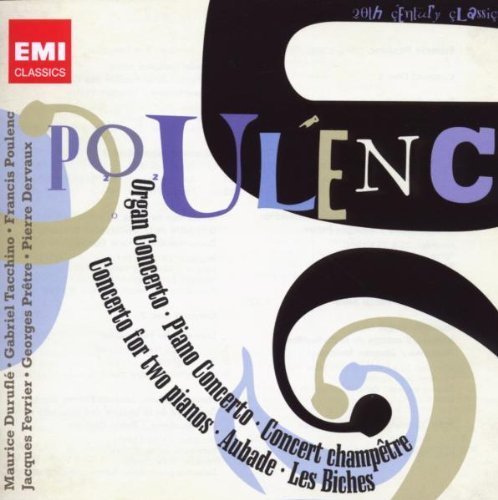
The top choice
Maurice Duruflé
(EMI/Warner)
Duruflé gave the premieres both private and public in 1938 and 1939 and also sorted the organ registration, so this historic version is in effect the Poulenc Organ Concerto. Even if the upper strings are sometimes a bit flaky, Georges Prêtre was a Poulenc favourite and the composer was at these sessions – if only for the champagne party he knew would round things off.
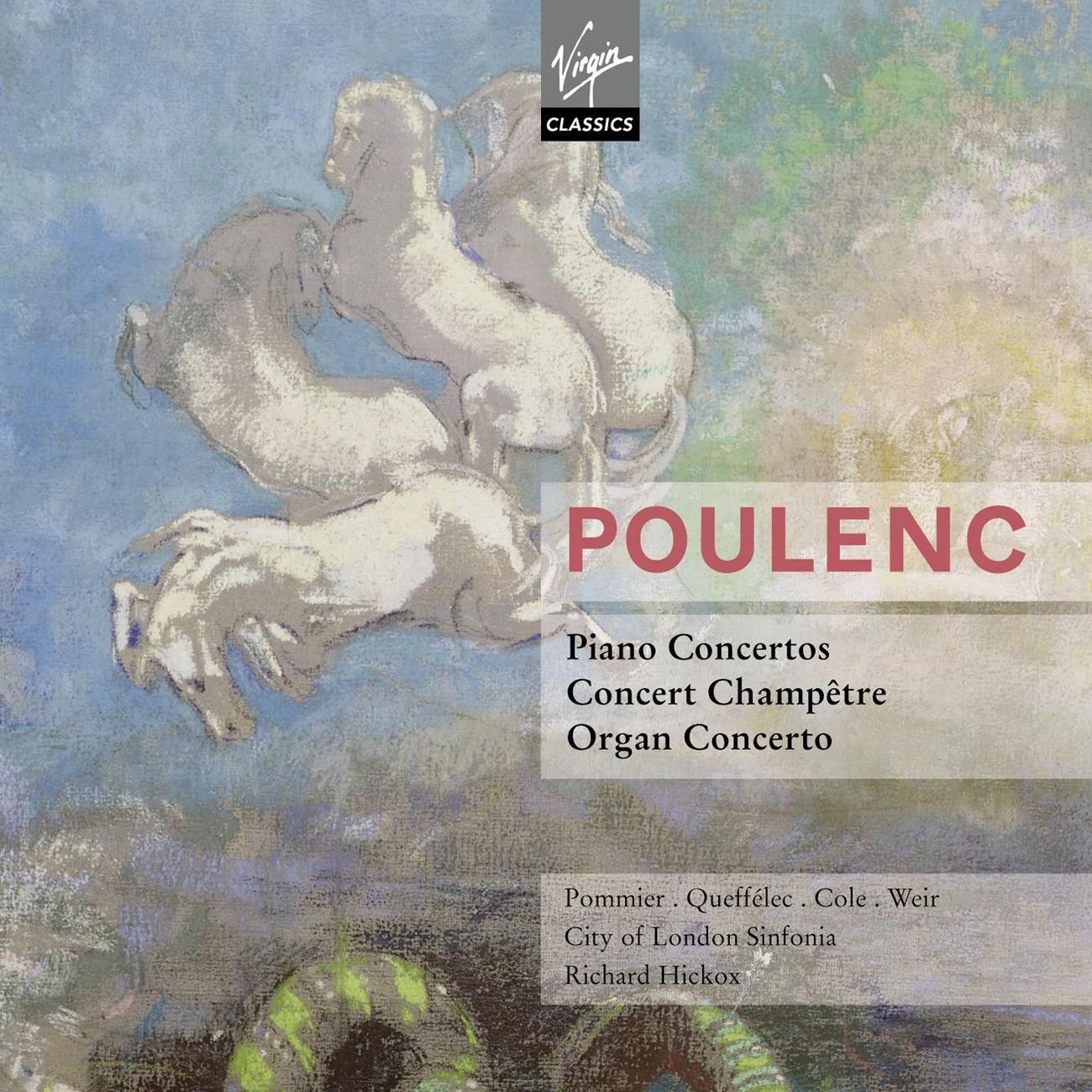
The concert hall choice
Gillian Weir
(Virgin/Erato)
The Royal Festival Hall organ is put through its paces by the doyenne of concert organists. Gillian Weir’s performance is simply thrilling with a vividly matched contribution from Hickox and the City of London Sinfonia. There is both drama and repose here and every dimension of the score is viscerally captured.
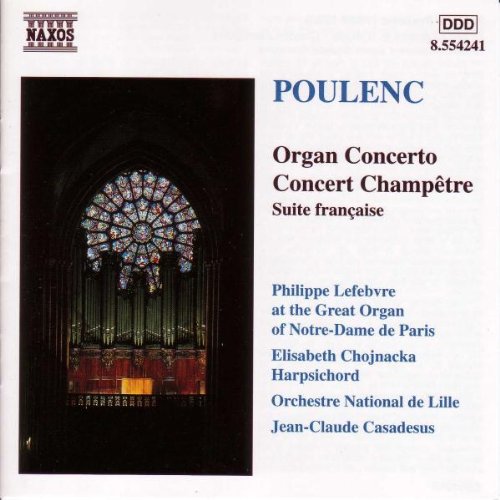
The bargain choice
Philippe Lefebvre
(Naxos)
Take yourself to Notre-Dame for a fiver with this live performance by the one-time organist at the Cathedral with alert forces from Lille under a young member of the Casadesus clan. Lefebvre obviously knows the massive organ like the back of his hand and the audience are quiet as church mice, so their applause at the end comes as a nice shock.
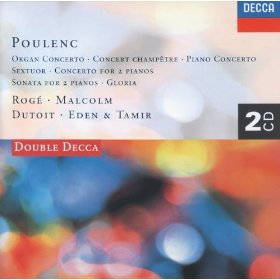
The cathedral choice
George Malcolm
(Decca)
The legendary George Malcolm of Westminster Cathedral switched to the organ loft of St John’s College Chapel, Cambridge, for his 1977 disc with the brilliant ASMF and Iona Brown. Virtuosity is perfectly married to spiritual insight here and the Decca recording atmospherically captures a neo-Gothic masterpiece in a setting of neo-Gothic splendour.
Selected discography
Date / Artists / Record company (review date)
1960 Zamkochian; Boston SO / Munch / RCA GD60817 (2/88R)
1961 Duruflé; ORTF Nat Orch / Prêtre / EMI 695584-2 (11/87; 6/04R)
1970 M-C Alain; ORTF Nat Orch / Martinon / Apex 8573 89244-2 (1/97R)
1977 Malcolm; ASMF / I Brown / Decca 448 270-2DF2 (7/96)
1977 Preston; LSO / Previn / EMI 569752-2 (8/97)
1982 Murray; Atlanta SO / Shaw / Telarc CD80643
1984 M-C Alain; Rotterdam PO / Conlon / Teldec 3984 21342-2 (11/98)
1985 Newman; Pennsylvania Sinf / Birney / Newport Classic NC60017
1986 Dalitz; Berlin SO / Flor / Berlin Classics 0013742BC
1990 Preston; Adelaide SO / Braithwaite / ABC 8 77000 8
1990 Weir; CLS / Hickox / Virgin 562384-2
1991 Wedd; Calgary PO / Bernardi / CBC SMCD5113
1991 Preston; Boston SO / Ozawa / DG 445 567-2GMA (9/89)
1992 Hurford; Philh Orch / Dutoit / Decca 475 7728DOR (12/93R)
1993 Tracey; BBC Philh / Y-P Tortelier / Chandos CHAN9271 (11/94)
1997 Lefebvre; Lille Nat Orch / J-C Casadesus / Naxos 8 554241 (6/99)
1997 M-C Alain; Bamberg SO / Kantorow / Apex 2564 61912-2
1999 Isoir; Orch de Picardie / Colomer / Calliope CAL9748
2000 Weir; ECO / Leppard / Linn CKD160
2001 Weir; ECO / Hill / Linn CKD178; CKD180
2001 Hauk; Georgian CO / Poschner / Guild GMCD7240
2006 Latry; Philadelphia Orch / Eschenbach / Ondine ODE1094-5 (3/07)
2007 P King; BBC NOW / Roth / Regent REGCD257
2009 Athanasiadès; Eurasia Sinfonietta / Wang / Tudor TUDOR7165
This article originally appeared in the January 2010 issue of Gramophone.











